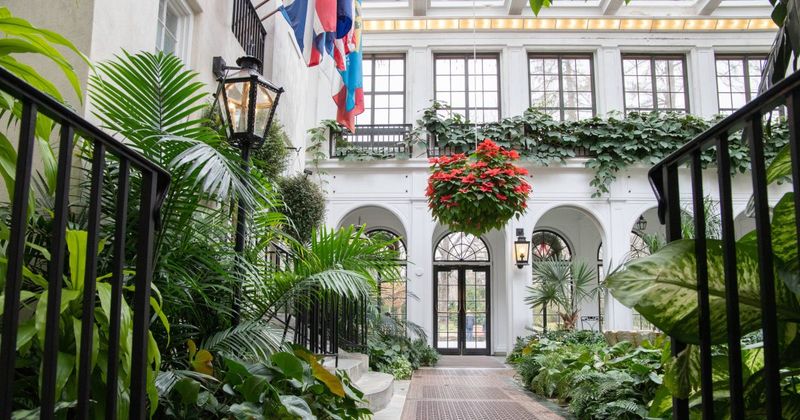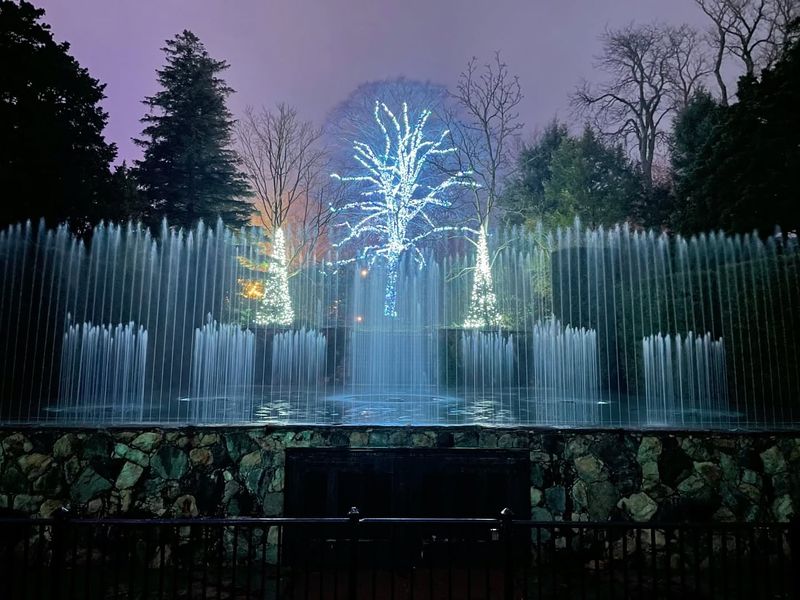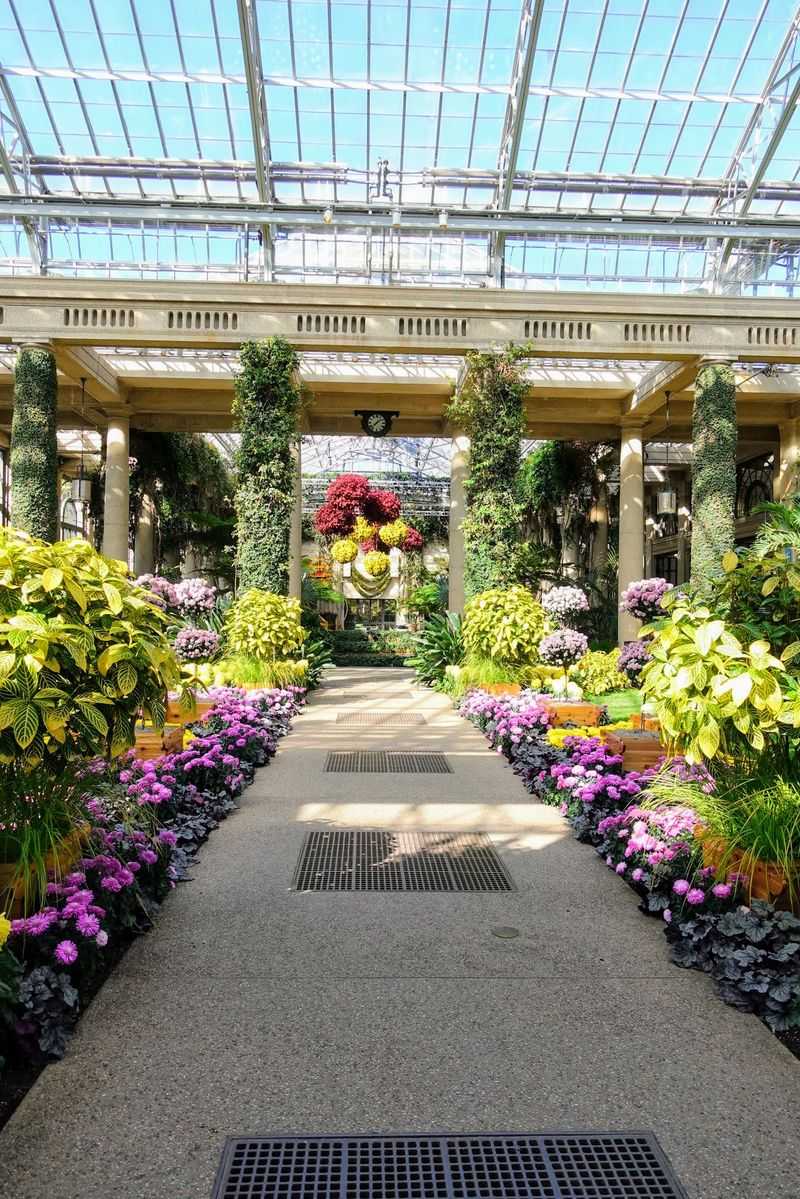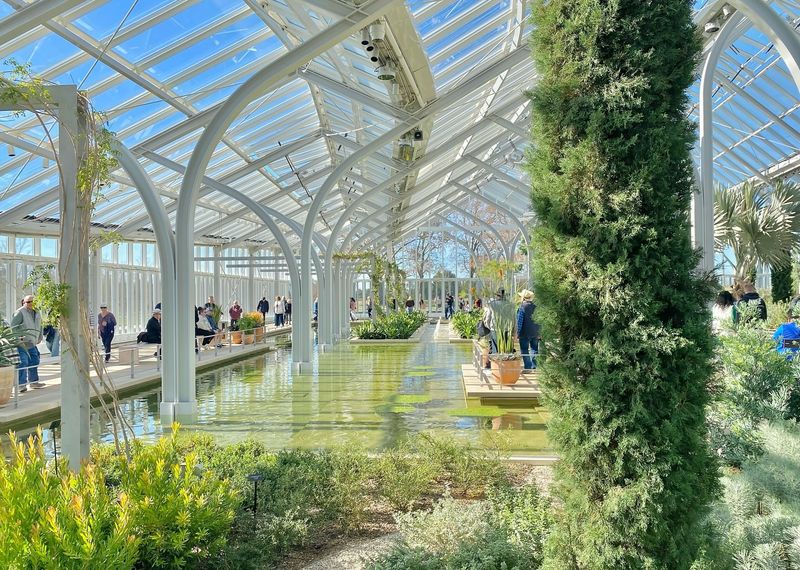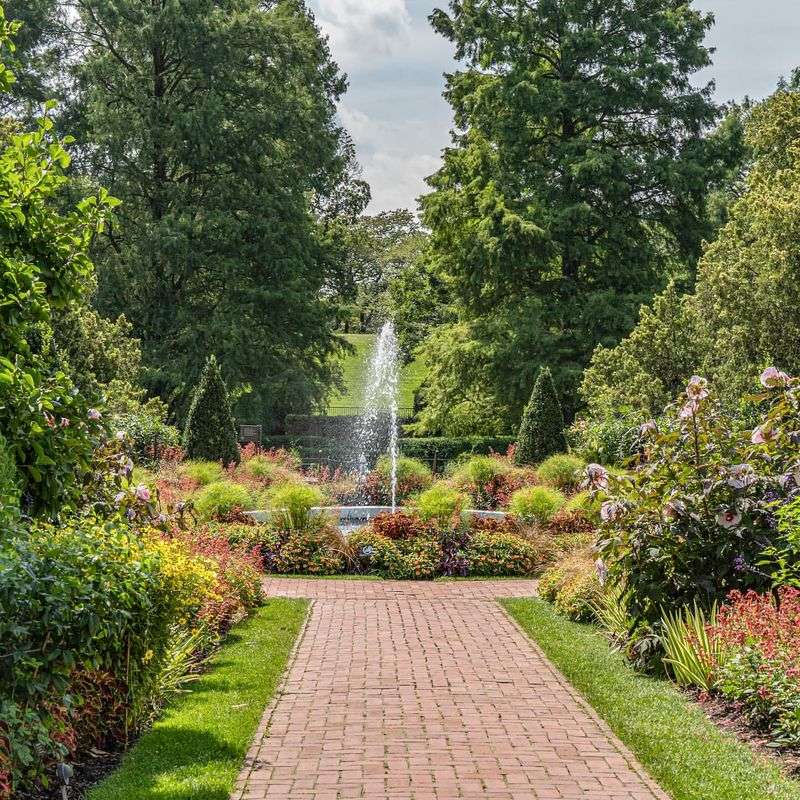In the heart of Pennsylvania’s Brandywine Valley, Longwood Gardens began as one man’s dream. Pierre du Pont, an industrial heir with a love for nature, bought a modest farm in 1906. What followed was a transformation into one of America’s most celebrated botanical destinations.
With 1,100 acres of gardens, fountains, and greenhouses, Longwood is a living museum of horticultural artistry. Du Pont’s innovative designs and plant collections reflect both elegance and experimentation.
Every path invites visitors to explore, learn, and be inspired. His legacy goes far beyond beauty—it’s rooted in education, sustainability, and public engagement. Longwood continues to evolve, welcoming millions each year. It’s a place where vision still blooms, season after season.
1. A Visionary’s Garden Canvas
When Pierre du Pont rescued the Peirce farm from timber harvesting, he saved not just trees but began painting a botanical masterpiece. The industrialist’s European travels had filled his imagination with possibilities.
His engineering mind approached gardens as both art and science. Du Pont meticulously documented plantings and design concepts, creating detailed blueprints for landscapes that would evolve over decades.
The property expanded from a modest 202 acres to over 1,100 acres during his lifetime, each addition carefully integrated into his growing vision of an American garden that rivaled the great estates of Europe.
2. Fountains That Dance With Music
The Main Fountain Garden represents du Pont’s fascination with hydraulic engineering and theatrical water displays. After witnessing the 1893 World’s Fair fountains in Chicago, he became determined to create something even more spectacular.
Recently restored to its original glory through a $90 million project, these fountains combine 21st-century technology with du Pont’s original vision. Computer-controlled jets synchronize with lighting and music, creating performances that would have amazed even du Pont himself.
Hidden beneath the five-acre garden lies an engineering marvel—a network of pipes, pumps, and 1,719 jets capable of shooting water 175 feet into the Pennsylvania sky during summer evening shows that draw thousands.
3. Conservatory Wonders Through Changing Seasons
The jewel in Longwood’s crown might be its 4-acre conservatory complex, where du Pont’s love of plant collecting finds its greatest expression. Within these glass walls, Pennsylvania winters disappear among palms, orchids, and Mediterranean treasures.
Seasonal displays transform the space throughout the year. Spring brings thousands of tulips and flowering trees, while summer showcases water lilies in outdoor pools. Fall features chrysanthemums trained into astounding shapes, and winter dazzles with more than half a million lights.
Du Pont designed the conservatory with both grandeur and intimacy in mind. Soaring spaces with hanging baskets transition to cozy nooks where rare specimens thrive, creating an ever-changing journey of botanical discovery exactly as he intended.
4. Educational Legacy That Grows Future Gardeners
Beyond creating beauty, du Pont established Longwood as a center for horticultural education. The gardens now host one of the world’s premier professional gardening programs, continuing his commitment to advancing botanical knowledge.
Students from across the globe compete for coveted positions in Longwood’s Professional Gardener Program. They live on the property, following in du Pont’s footsteps by combining theoretical learning with hands-on experience among Pennsylvania’s most magnificent plant collections.
Children discover the wonder of plants through specially designed programs. The Idea Garden provides interactive experiences where young visitors can touch, smell, and even taste plants—fostering the same curiosity that drove du Pont’s lifelong passion for the natural world.
5. Preservation Of A Living Heritage
When Pierre du Pont died in 1954, he left behind more than beautiful gardens—he established a foundation ensuring Longwood would remain accessible to the public forever. His forward-thinking philanthropy preserved not just plants but a philosophy of excellence.
Today’s garden staff meticulously maintains historical accuracy while embracing innovation. Du Pont’s original tree specimens, some now over 200 years old, receive specialized care. His handwritten notes still guide certain planting decisions throughout the Pennsylvania property.
Archivists preserve thousands of photographs, letters, and garden plans that document du Pont’s vision. This living museum continues evolving—adding contemporary designs like the East Conservatory Plaza and Meadow Garden while honoring the founder’s original intent.


